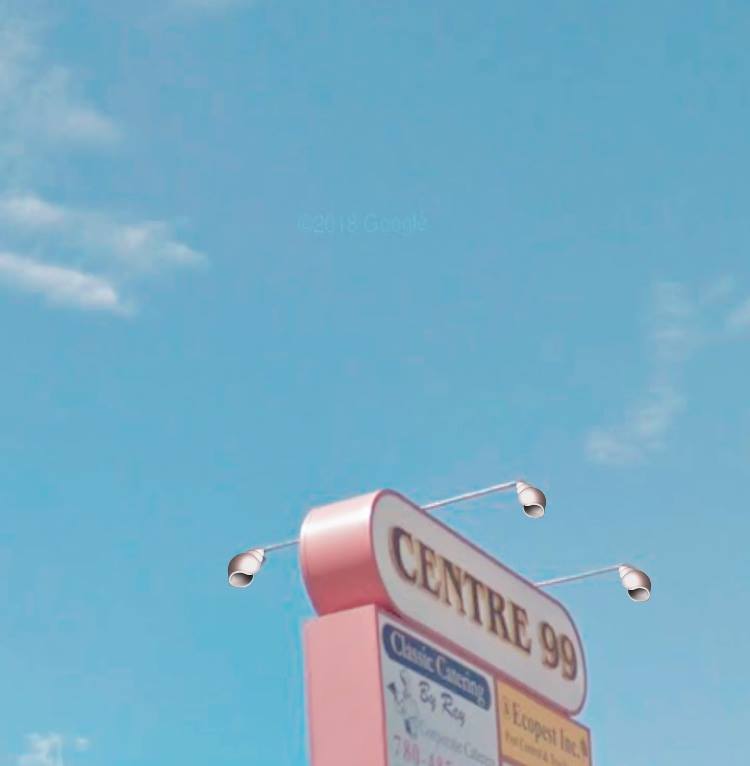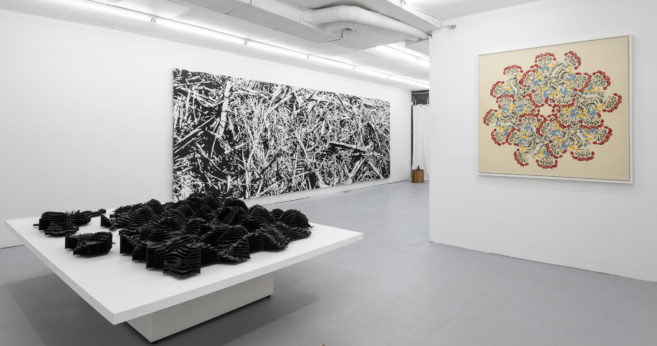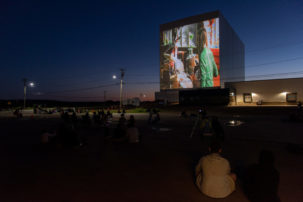When I think of Indigenous art, I think of Indigenous revival. I think of community building. I think of performance art and traditional beading. On January 26, 2019, I attended a one-night-only Indigenous art event called “ᐋᒋᒧᐃᐧᐣ – Âcimowin,” curated by Marcus Thunder and Allysa Pierre, at an all ages DIY-space in South Central Edmonton. The night featured Indigenous youth showing for the first time among more established artists, DJs, a jewellery stand, a pop-up clothing shop and artworks and performances by more than 30 artists.
I don’t usually think of governance when I think of Indigenous art, though I do believe that art and governance are intrinsically connected.
Creating space for Indigenous governance through art outside the scope of the settler state is deeply important, and also very traditional. Indigenous art is and has always been legal; Indigenous art is governance. Wampum belts were, and still are, legal documents—just as treaties are. Nation-specific patterns are governance also: the Mackenzie braid on my parka lets you know who I am and where I belong. Jewellery, too, is governance, medicine wheels are governance, ribbon skirts are governance. “We need to reconstitute these objects and their meanings back into our political actions,” Dzawada̱’enux̱w artist Marianne Nicolson said, speaking of such pieces in the “In A Different Light” exhibition at the Museum of Anthropology. “To me that’s far more interesting than looking at them for their formal qualities, even though it’s not hard to, because they’re really beautiful.”
When I walked into Coral Plaza, I felt the power of people reinstating themselves, their art and their family lines. The space was set up warehouse-style, with one wall filled with visual art from floor to ceiling. The front of the warehouse was set up with mixers and a mic, and the other wall was empty save for a square made of twinkle lights. Stairs at the back of the space led to a photography wall and video room. There were artists showing for the first time, youth running around giving away free zines and people smashing interactive art pieces with frozen roses that, when broken, revealed a slip of paper with a name of a missing or murdered Indigenous woman on it.
There are strong Indigenous revival movements happening in the prairies, but when I’m busy getting a degree, mourning family members, organizing marches, drinking tea with with my jijuu, or just sleeping, art is so easily forgotten. It’s hard for me to find time to do something as insignificant as art feels. But, as Nicolson reminds us, these pieces are more than just frivolous. They’re acts of survival. They’re acts of revival. They’re taking space. And they’re demanding justice.
More Indigenous perspectives from women and queers should have been included in “ᐋᒋᒧᐃᐧᐣ – Âcimowin,” because decolonization isn’t decolonial without trans women, without queers or without genderqueers. I agree with Lindsay Nixon, who makes clear the urgency of the work ahead in their essay “Making Space in Indigenous Art for Bull Dykes and Gender Weirdos”: “I still yearn for a more expansive representation of fierce feminist, gender-variant and sexually diverse realities within Indigenous art,” they write. “I want a space in Indigenous art for all my bull dykes, bratty baby girls, gender weirdos and dirt fags.” It’s imperative that Indigenous women, queers, and Two-Spirits remain at the centre of these movements.
I have faith in what my Indigenous kin will do in the future. I have faith that we, as queer NDNs and women, can abolish the cis-hetropatriarchy, and I have faith that this can and will be done through art, and enacted in governance. To all the queer NDNs and women there, making art, in the back and the forefront, I see you. Art is legal, art is governance—and Indigiqueer art is how resistance is happening.

 Coral Plaza Edmonton. Photo: Coral Plaza Facebook page.
Coral Plaza Edmonton. Photo: Coral Plaza Facebook page.






